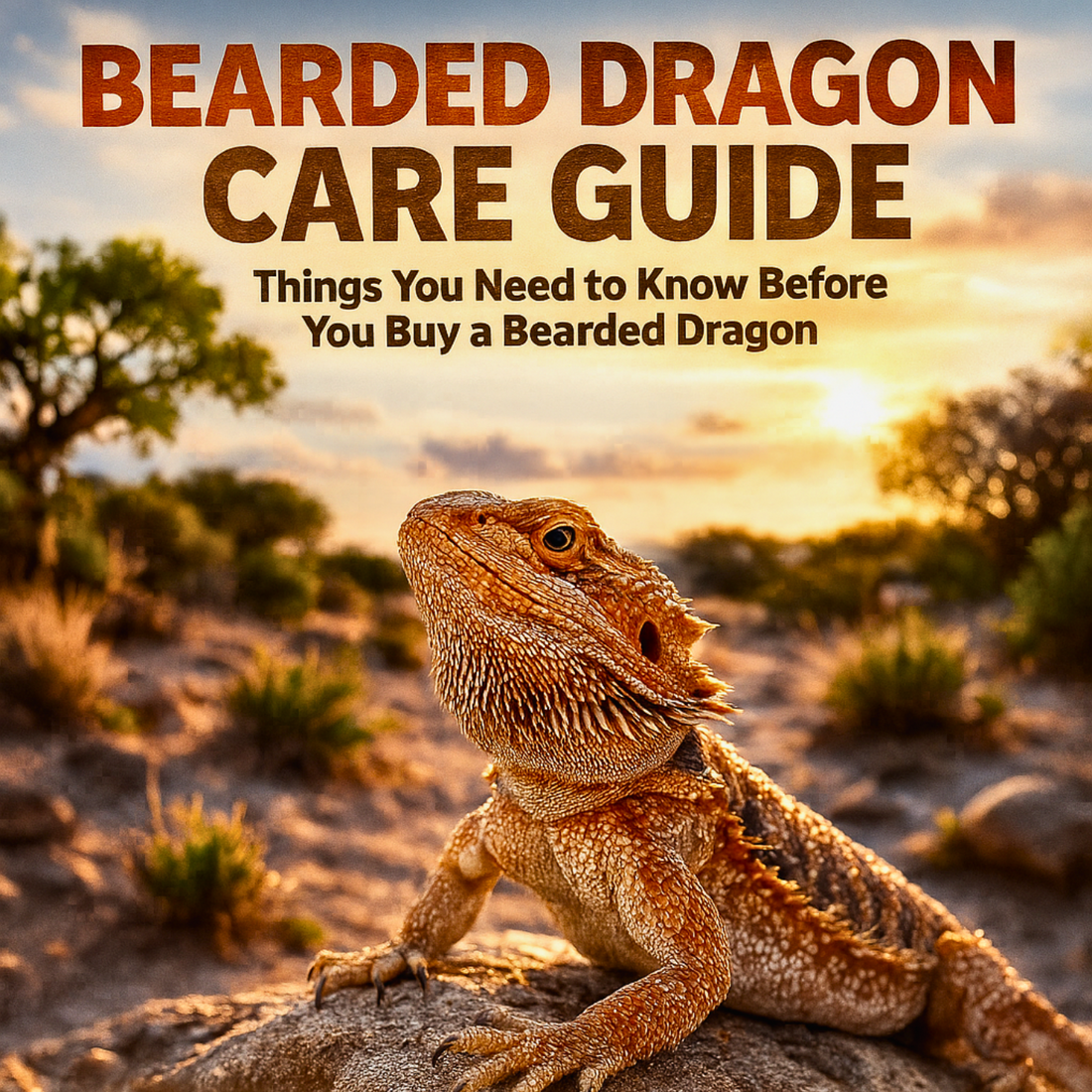
Bearded Dragon Care Guide
Share
Natural Habitat
Bearded dragons (Pogona vitticeps) come from the arid deserts and scrublands of Australia. In the wild, they bask under intense sunlight, climb on rocks and branches, and forage for insects and plants. Their natural environment is hot and dry during the day and cooler at night.
Difficulty Level: BEGINNER
Bearded dragons are considered beginner-friendly reptiles because of their hardy nature, calm temperament, and interactive personalities. They do require specialized heating, lighting, and diet, so while they’re easier than some reptiles, they’re not “set-and-forget” pets.
Size & Lifespan
- Size: 16–24 inches (including tail)
- Weight: 300–500 grams on average
- Lifespan: 8–12 years in captivity with proper care
Enclosure Setup

Tank Size
- Baby (0–6 months): 20–40 gallons (but they outgrow it fast)
- Juvenile/Adult: 75–120 gallons minimum (a 4’x2’x2’ enclosure is ideal)
Lighting & Heat
Bearded dragons depend on heat and UVB for digestion, metabolism, and bone health.
- UVB Light:
- Must use a linear UVB bulb (T5 HO recommended) that covers 2/3 of the tank length.
- Replace every 6–12 months depending on brand.
- No coil bulbs — they don’t provide enough UVB.
- Heat/Basking Light:
- Basking spot: 100–110°F (juveniles closer to 110°F, adults 100–105°F)
- Cool side: 75–85°F
- Night temps: Can drop to 65–70°F safely
- Use a digital thermometer with a probe for accuracy.
- Lighting schedule: 12–14 hours of daylight, 10–12 hours of night.
Substrate
- Safe options: Non-adhesive shelf liner, tile, reptile carpet, paper towels, or a bioactive substrate (sand/soil mix designed for reptiles).
- Avoid: Loose sand marketed for bearded dragons (risk of impaction), wood shavings, and calcium sand.
Humidity
- Keep 30–40% (similar to household room humidity).
- Too much humidity can lead to respiratory issues.
- Light misting or a shallow water dish is fine, but don’t overdo it.
Diet
Bearded dragons are omnivores. Their diet shifts as they age:
- Babies (under 12 months): ~70% insects, 30% veggies
- Adults (12+ months): ~70% veggies, 30% insects
Insects
- Crickets, dubia/ discoid roaches, black soldier fly larvae(Calci Worms), silkworms, hornworms, and occasional mealworms or superworms.
- NEVER feed wild-caught bugs or fireflies (toxic).
Vegetables & Greens
- Collard greens, mustard greens, turnip greens, dandelion greens, squash, bell peppers, carrots (occasionally).
- Avoid spinach and iceberg lettuce (low nutritional value).
Fruits (occasional treats)
- Blueberries, strawberries, mango, papaya, apple slices.
Supplements
- Calcium with Vitamin D3: 4–5x per week (babies), 2–3x per week (adults)
- Calcium without D3: Can be used if dragon gets natural sunlight
- Multivitamin: 1–2x per week
- Lightly dust insects before feeding.
Handling & Temperament
Bearded dragons are typically very tame and often enjoy sitting with their owners. Begin with short handling sessions, always supporting their entire body. Never grab or chase them around the enclosure, as this can cause stress and damage their trust.
If your dragon is shy or skittish, you can help them get used to you by leaving your scent in their environment. Try gently moving or touching objects in their tank so they carry your scent, or wear an old shirt to bed and place it in the enclosure the next day. This helps them associate your smell with safety.
With time and patience, most bearded dragons learn to recognize their owners and may even come forward or “beg” for food.
